The future of human space exploration and habitation is only possible if we can generate sufficient electricity in space. Currently, all power generated for human use in space comes from solar panels and radioisotope generators. In the future, though, we will need something much more robust.
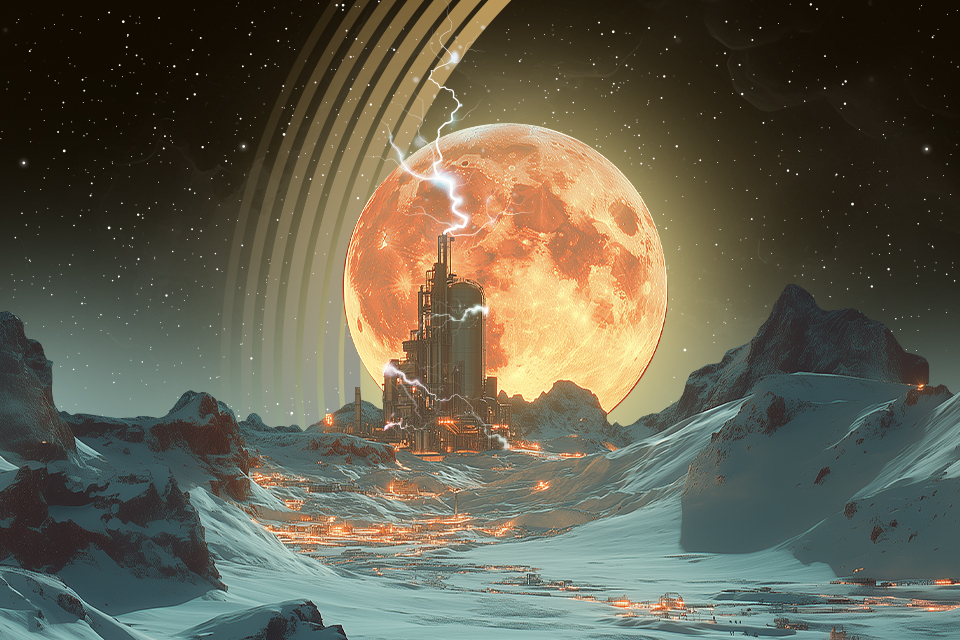
Electricity in space
Almost 90% of all technology on our planet, whether it’s a fridge, a smartphone, or a CT scanner, requires electricity to function. Connecting to a power source is not a problem on Earth.
Most of our planet’s energy is supplied by high capacity power plants that harness the Earth’s resources, including fast-running water, wind, sunlight, nuclear fission, and fossil fuels.
This electricity is distributed throughout the grid, a concept that simply can’t exist in space. Not only are there no sockets, but you’re unlikely to find any falling water or wind or useful fossils to dig up. All you can do is work with solar energy as well as any materials astronauts can bring on board.
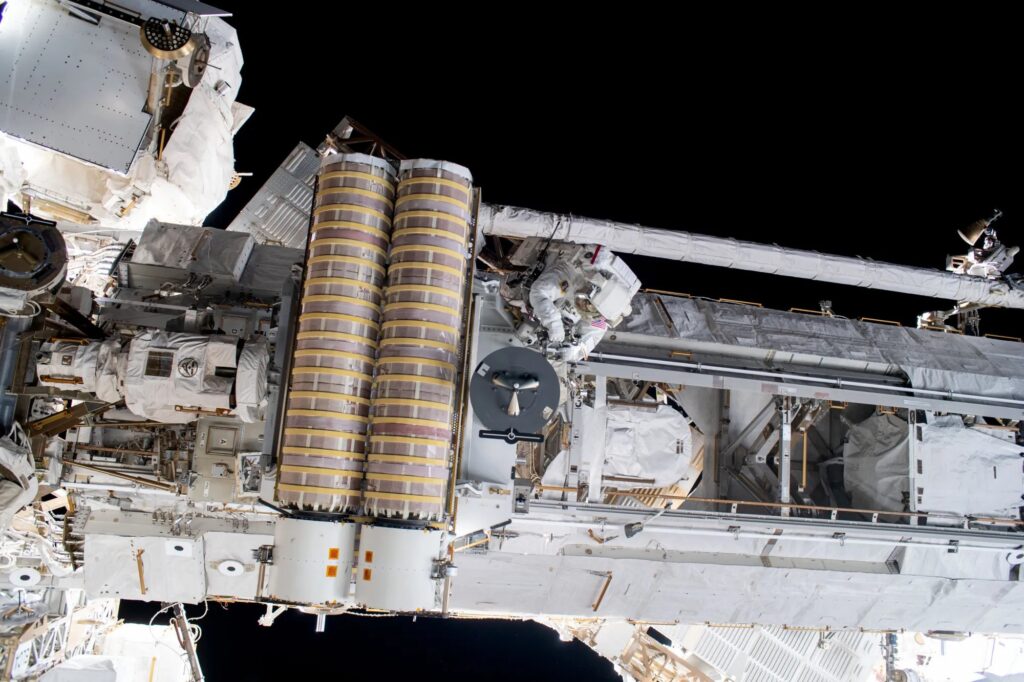
Neither of these options yields enough power. After all, an average spacecraft’s solar power system can barely run a vacuum cleaner. Nevertheless, astronauts have long adapted to such miniscule levels of on-board electricity. But this is something we do need to change if we plan to fly longer distances on spaceships that require more energy.
How do solar panels work?
Currently, the most common source of power in space is sunlight, specifically the energy generated by solar panels through the photovoltaic effect. This phenomenon describes the ability to produce electricity by exposing semiconductor materials to light. When photons come in contact with p–n junction semiconductors, they cause these electrons to leave their orbits and travel through the material, which generates direct current.
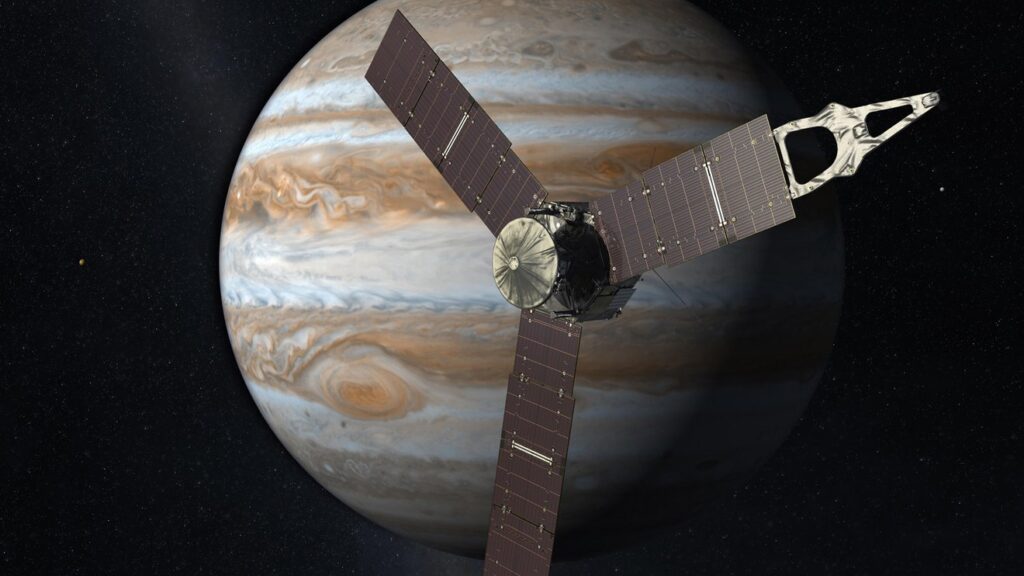
This type of renewable energy is essentially waste-free. As long as you have sunlight, you will have power.
The only concert with this method is its low efficiency rate. For instance, if a panel that orbits the Earth has a surface area of 1 square meter, it will generate 1367 Watt. By converting it into electric current, you will only get about 130 Watt, which roughly equals one incandescent lamp or 12 LED lamps.
This problem is something that engineers continue to work on, but even a 30-40% efficiency increase won’t mean much unless you also upscale the panels. And to be of any significant use as an energy source, these panels will have to be enormous.
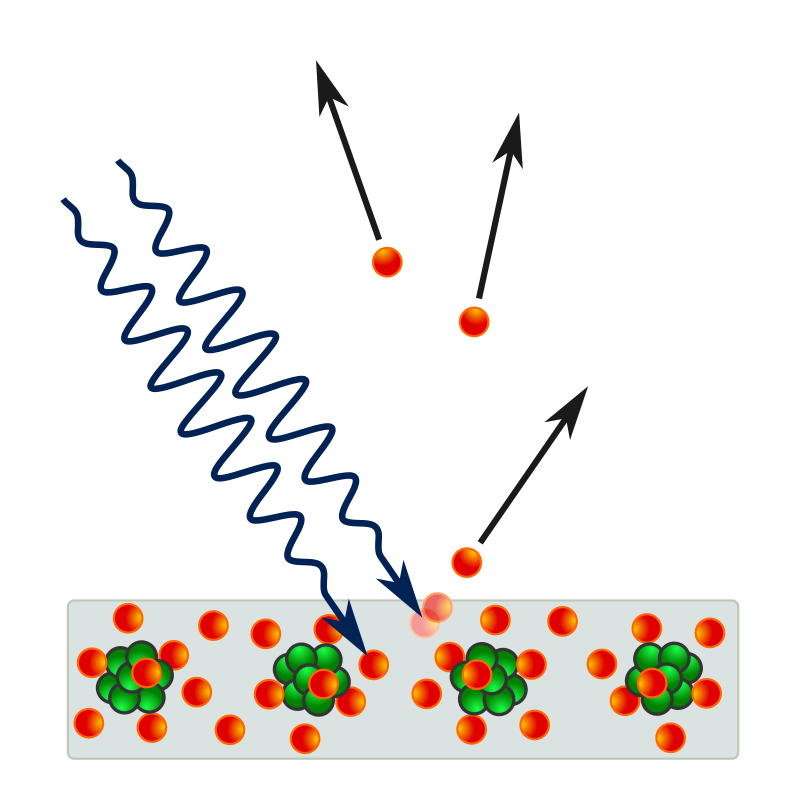
The Sun’s radiant energy density increases with proximity, so the same panels will generate more power when orbiting Venus compared to what they can produce from the Earth’s orbit. Any future spacecraft or stations designed to operate in the inner Solar system will likely be relying on solar energy for quite some time.
But consider how most celestial bodies in the Solar system are removed even further from its core, and traveling there will definitely require alternative sources of energy.
Batteries and fuel cells
Batteries are a fairly common way of sourcing power in space. They are similar to phone and car batteries we use on Earth. In space, they are mainly used for small devices with shorter life spans, given that batteries themselves don’t last that long during flight.
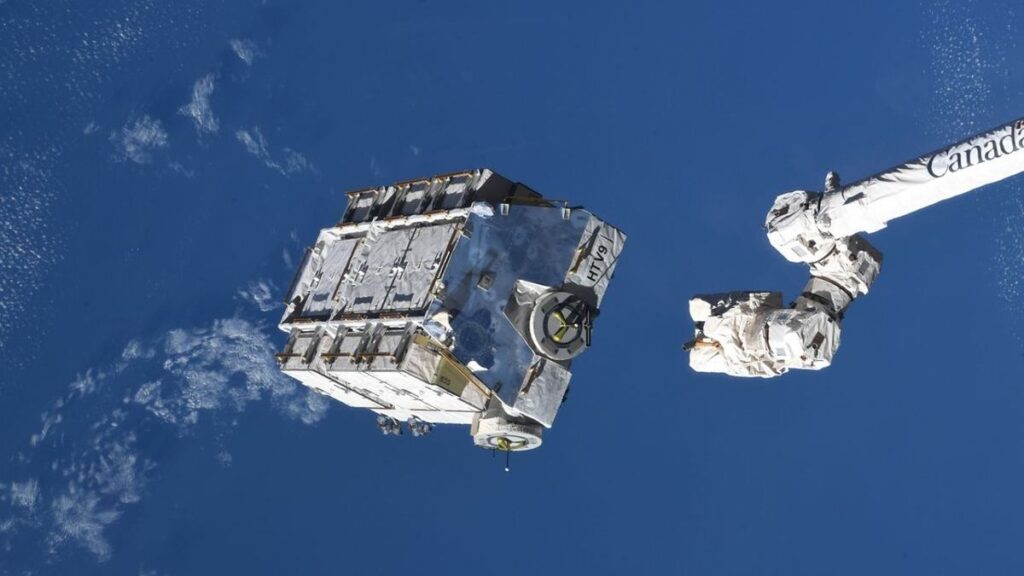
Fuel cells, or FCs, may appear similar in concept to batteries, but they can, in fact, be more efficient. FCs convert the energy of chemical reactions into electrical current using thermocouple arrays, in which electrons enter an excited state when exposed to heat. Regenerative fuel cells that use hydrogen and oxygen are the most promising option for long-term space activities, as they can generate plenty of heat while remaining largely non-toxic.
Fuel cells tend to be quite small with the output to match their size, any extended usage precludes the increase in capacity. In short, FCs need to hold large amounts of fuel and oxidant to be effective. In the case of hydrogen and oxygen, they also need continuous refrigeration, so that adds more heavy equipment on board.
Theoretically, this method could be effective when used on other planets, provided we have the equipment and resources to mine more fuel and oxidant. As it stands, this is not the most popular choice due to its high energy demands with a much smaller output that simply can’t justify the cost.
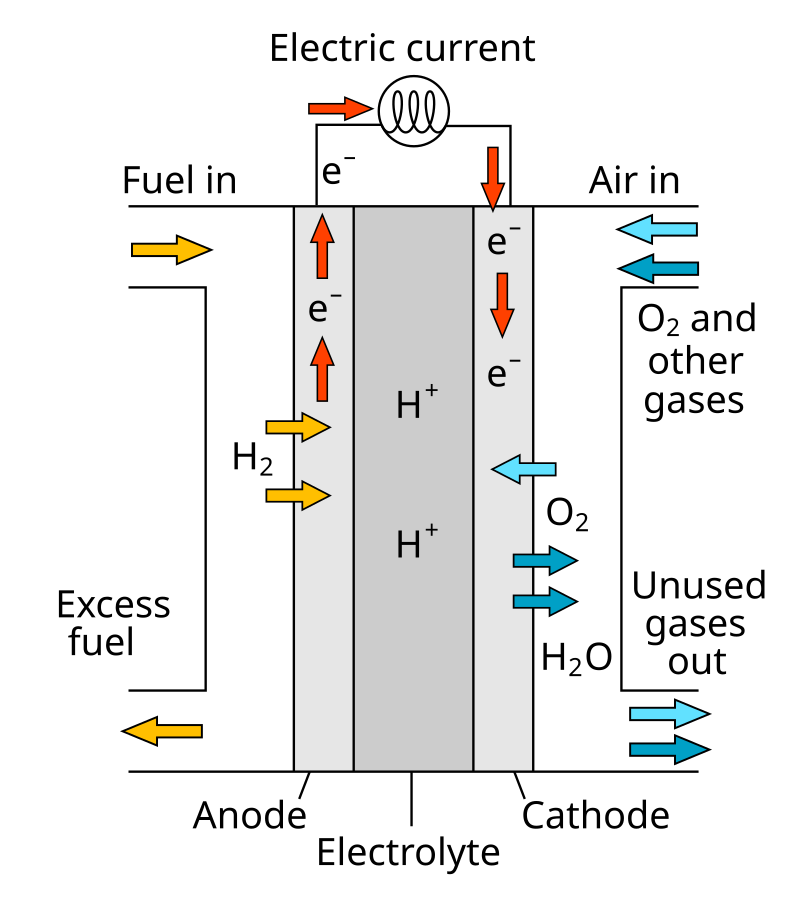
RTGs
Radioisotope thermoelectric generators, or RTGs/RITEGs, are the most effective technology we currently have for the prospective exploration of other planets. These generators use thermocouples to convert the natural radioactive decay of certain isotopes into electric current.
Although alpha decay is the more effective source of energy as it produces more heat, beta decay can also be an option. Additionally, isotopes used in RTGs are able to generate large amounts of energy without losing their potency due to longer half-life.
The best isotopes to use for RTGs are Plutonium-238, Strontium-90, and Curium-244. Other viable options include Polonium-210 and Americium-241, though other elements have been tested for compatibility.
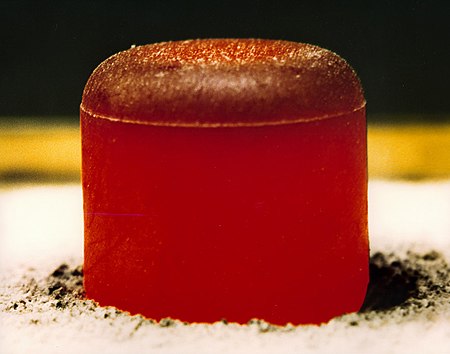
Plutonium-238 is the most common choice for RTGs, specifically Pu-238 oxide. It powers spacecraft like Viking, Voyager, Cassini, and New Horizons as well as Curiosity and Perseverance rovers.
What makes Pu-238 the preferred isotope is mainly its low shielding requirements for containing radiation inside the main unit. This is due to the isotope’s low neutron and gamma radiation properties.
Pu-238 has a half-life of 87 years and a well-balanced radiation output that ensures decade-long operation. One major problem with this element is that it has to be especially refined.
Enter Strontium-90. As a byproduct of nuclear fission, it doesn’t need to be refined, so it could serve as a more cost-effective alternative. This advantage made it the preferred fuel source for Soviet-era RTGs, though it wasn’t used directly on spacecraft due to its high gamma radiation properties, which meant all equipment had to be protected with lead shields. However, Strontium has a much shorter half-life than Pu-238 while generating less energy.
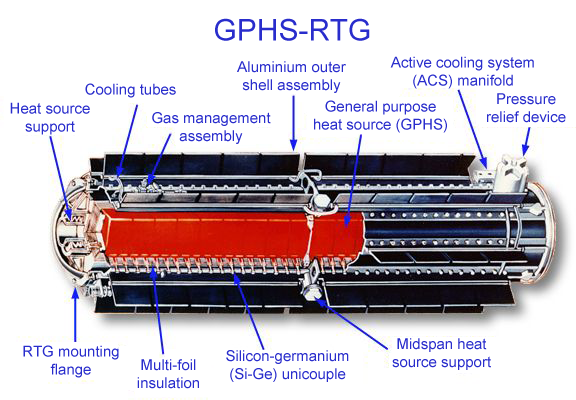
Another option for RTG fuel is Curium-244, capable of producing six times more heat than plutonium. Although its half-life is fairly short (only 18 years), a curium-powered RTG still won’t lose the ability to generate energy, instead only reducing the output.
There are far more serious issues associated with Curium-244 — its cost and the danger of excess neutron and gamma radiation. This is why most generators that use this isotope as fuel tend to have thick 4-inch lead shields.
Finally, there is also the option of Polonium-210, which was widely used for RTGs in the US in the late 1950s. With the whopping radiant intensity of 140 Watt per gram, this isotope emits only alpha particles during decay and therefore doesn’t require shielding.
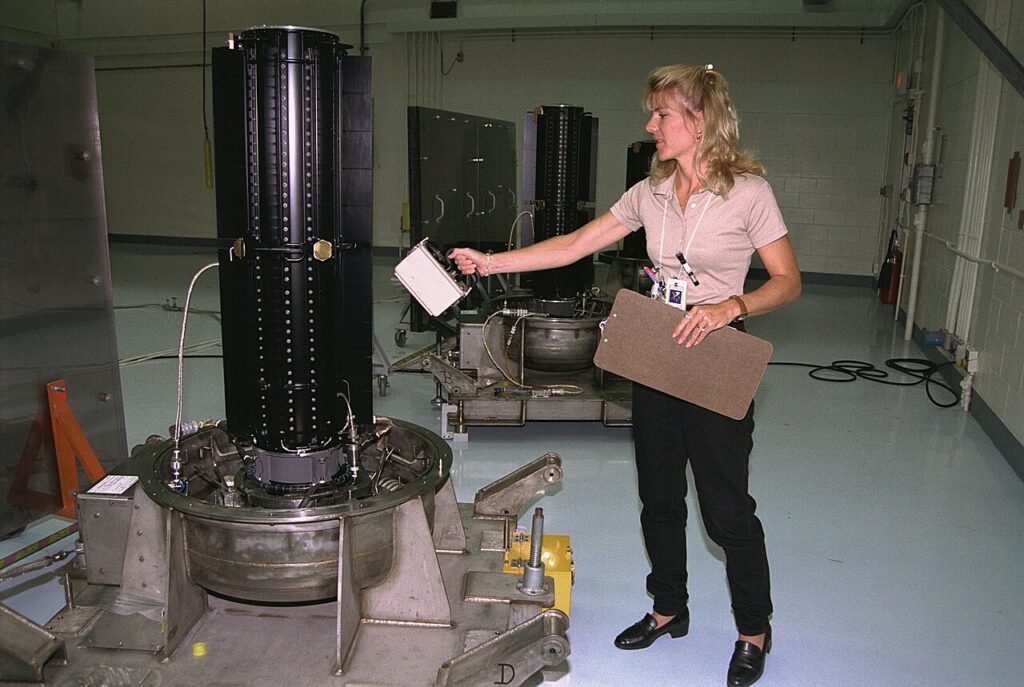
It’s worth noting that even plutonium RTGs are far from safe. Being in constant proximity with isotope-powered reactors can have drastic effects on human health. Although they are the best current alternative to solar panels for long-term missions, it might be a good idea to start exploring other options.
Why should we expand energy options in space?
The amount of energy required to sustain human life for actual space habitation is naturally much higher, especially compared to the power needed for temporary expeditions. Even now, astronauts prefer not to use high energy consuming devices that are an everyday staple on Earth.
But it’s not the desire for sustainability that may actually lead to a large-scale pivot to alternative energy sources, but rather the need to improve the engine design itself.
Until now, most spacecraft have relied on chemical propulsion systems to maneuver in space. These engines tend to use fuel rather ineffectively due to their comparatively low thrust when ejecting propellants.
Scientists have long been working on viable alternatives, and it’s quite possible that new types of engines will enter the testing stage in the upcoming decades. After these systems are tested, we may as well see a massive breakthrough in space exploration, including interplanetary travel.
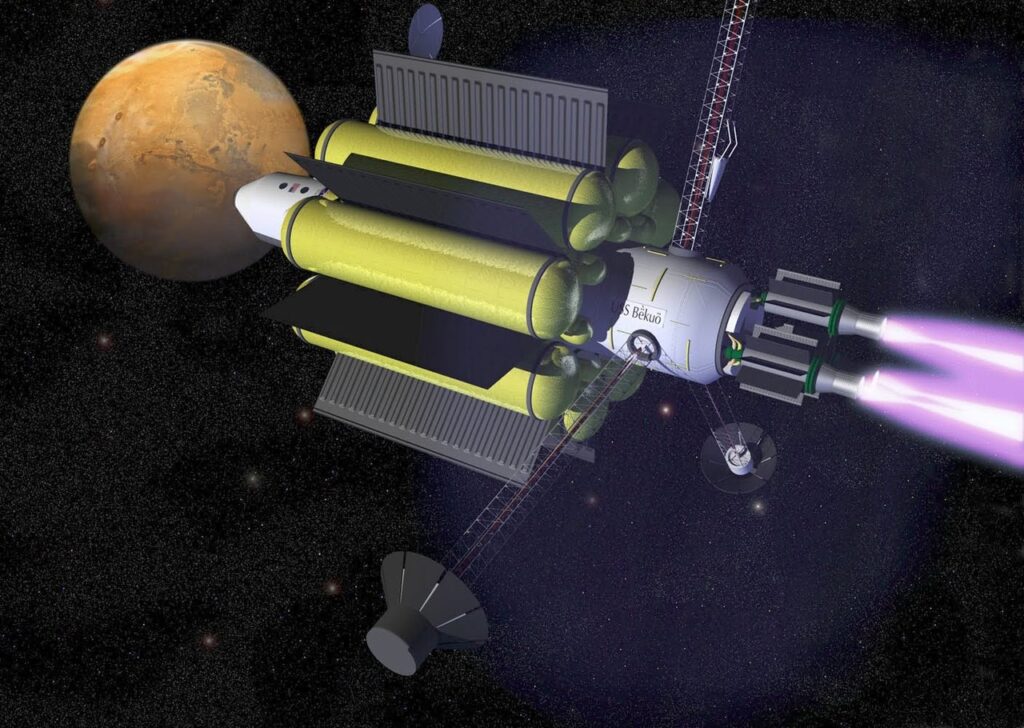
Electric propulsion systems, whether they operate by plasma or ion propulsion, function similarly — by generating electromagnetic thrust from neutral ions.
At the same time, this method requires large amounts of electricity, while chemical propulsion engines don’t need it at all. Modern electric engines, commonly used in satellites to correct trajectory, require only a small amount of electrical power, which can be provided by solar panels.
That said, neither solar panels nor RTGs are capable of generating enough power for an electric engine to propel a piloted spacecraft to Mars. A journey of such complexity requires more innovative solutions.
Nuclear reactors in space
A perfect solution for this problem could be a nuclear reactor. This technology has existed for decades, but is yet to be used on spacecraft or space stations.
Although nuclear reactors are different from RTGs, the source of energy is the same, and it’s the heat released by a nuclear reaction. In the case of nuclear reactors, the process is driven by a chain reaction rather than spontaneous.
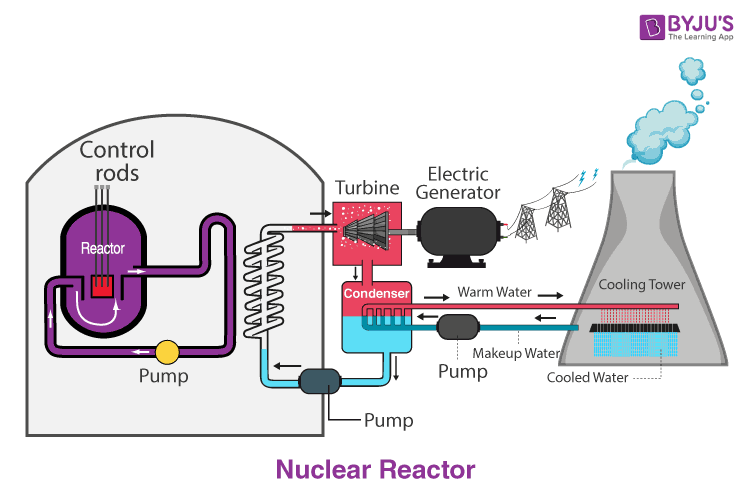
A nuclear chain reaction occurs when irradiated particles of an unstable atom split particles from another atom, which in turn splits another, and the process grows exponentially until it ends in an explosion.
However, some of these particles can be trapped with rods that contain material capable of absorbing neutrons, thus making it possible to control the reaction and generate stable energy.
The heat generated by the nuclear reaction heats up the water in the internal pipework of the reactor, which powers the turbine and spins the electromagnetic coil in order to produce huge amounts of energy.
Most active reactors are massive stationary structures, used largely at nuclear power plants and research facilities. Downscaling nuclear reactors has been a major point of research from the moment of their invention. Naturally, it would help to have smaller, more portable reactors as they can be a great source of power supply in transportation.
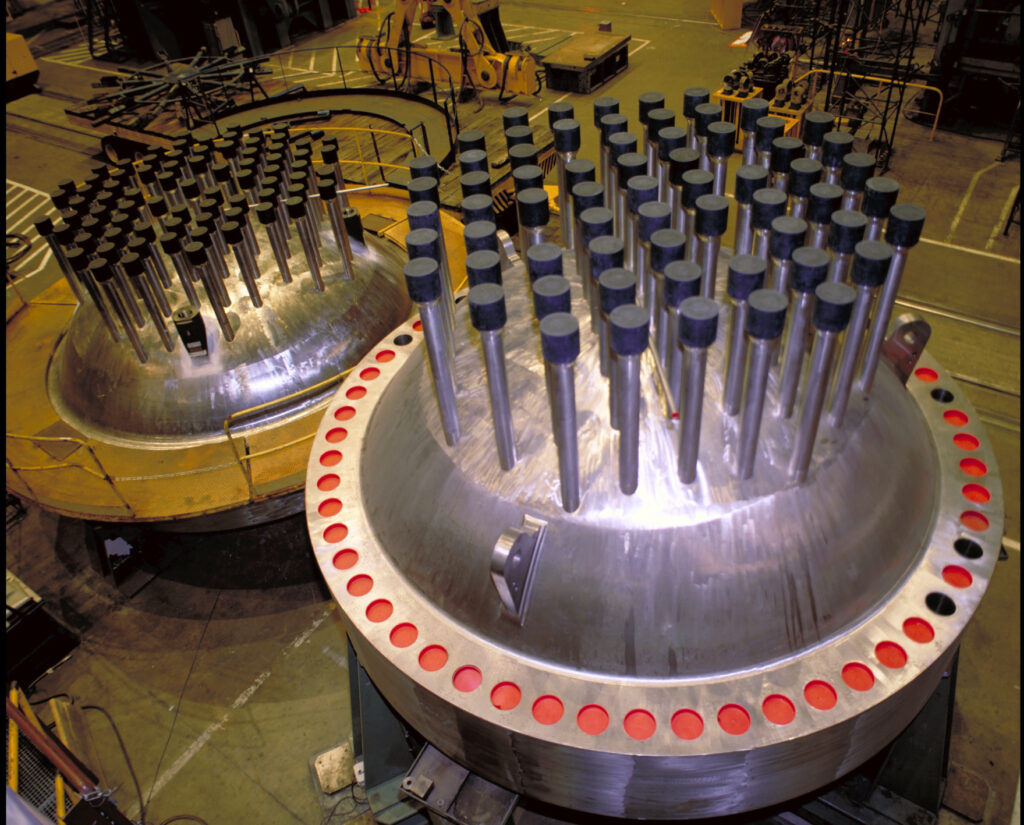
Throughout the 20th century, nuclear reactors were considered as a possible power source for airplanes, trains, and even cars. The chief driving force for these projects was the cost-saving potential of nuclear energy — it could power various modes of transportation for many years with just a single nuclear assembly.
Despite such grand ambitions, the idea only seemed to stick with airplanes and even led to test trials. Though, both the US and Soviet military eventually abandoned the project, fearing that the risk of crash posed too great a danger for the environment. Nuclear reactors also proved to be too heavy — a single unit on the Soviet prototype plane Tu-119 weighed 39 tons.
This is by far the main reason why the use of nuclear reactors in space remains purely theoretical. Few rockets are capable of launching such massive systems into orbit.
There is one mode of transportation, however, where nuclear reactors have found more success, and it’s naval ships and submarines.
The good news is, manufacturers are always working on the development of more compact reactors, reducing their weight gradually with each new model.

According to Mitsubishi Heavy Industries, they are planning to unveil their nuclear-powered truck within this decade. Meanwhile, Rolls-Royce is developing a portable reactor intended to power a moon base.
Evidently, the potential for nuclear reactors to become a staple in space travel is quite significant. To be more realistic, we also need to tackle the logistics of fuel delivery to and from the reactors, as well as the disposal of radioactive waste. This isn’t to claim that these issues completely negate the possibility of nuclear reactors in space, but it does significantly complicate their operation.
Another problem related to operation of nuclear reactors in space exploration is the lack of fuel on other cosmic bodies. So far, no sufficient uranium deposits have been found outside the Earth itself. There is a chance such resources may be discovered in the future, just as it’s likely that they will always have to be supplied from Earth.
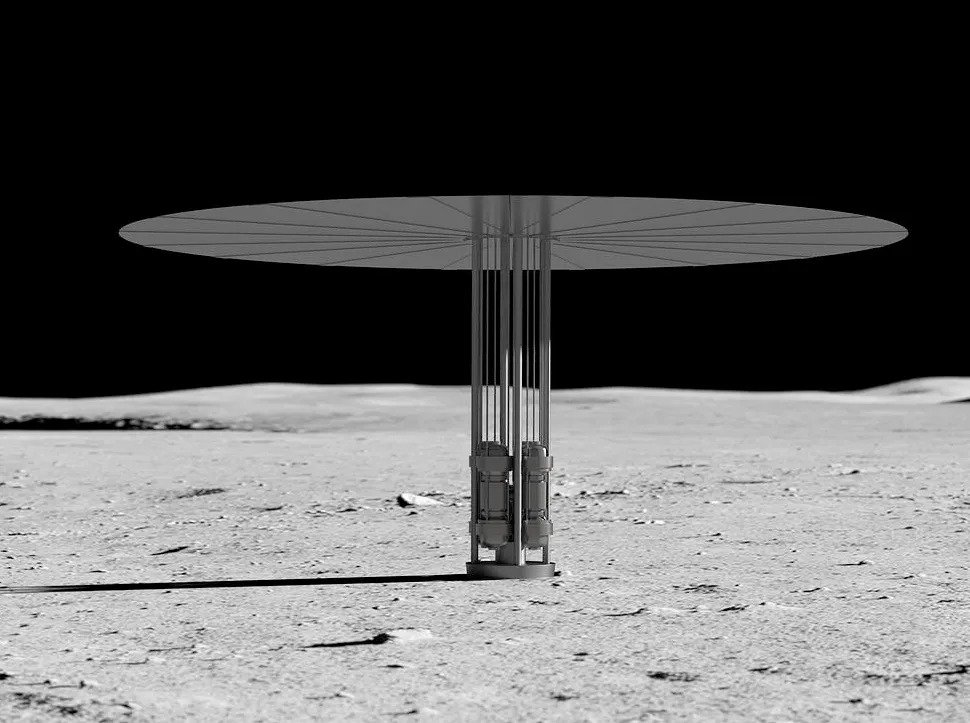
Thermonuclear fusion
Having considered all previous options, it’s not hard to see why thermonuclear fusion is considered the best potential energy source for long-term space travel. Not only has it been long understood on a theoretical level, it’s also been successfully implemented in a hydrogen bomb. However, physicists still struggle to achieve controlled thermonuclear fusion, which could power turbines and generate electric current.
To maintain plasma at the required temperature of millions of degrees, and to do that for long periods of time, you will need enormous amounts of energy. In 2022, scientists from the Livermore National Laboratory in the United States reported that they had managed to achieve positive energy balance with their reactor, albeit for a short period.
Of course, this is a far cry from a stable thermonuclear reactor. Researchers are still unsure which type of thermonuclear reactor will be the most successful at bringing this stability to life.The traditional way of generating energy from plasma is achieved with the help of the Soviet invention tokamak, which stands for “toroidal chamber with electromagnetic coil” for its distinct doughnut-shaped chamber. In it, the plasma is confined by magnetic fields, and the resulting heat from the fusion is converted into energy.
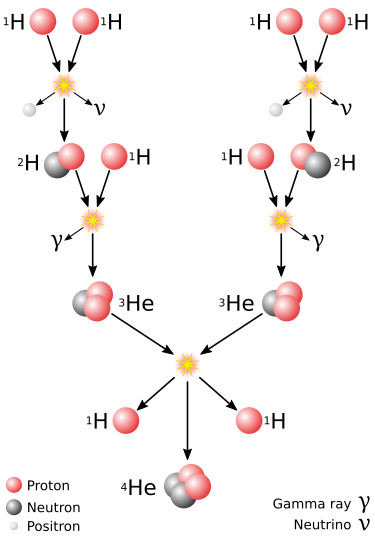
A more advanced version of this technology is a stellarator. Although it’s also shaped like a doughnut—or a torus, as the scientists call it—the actual process of confining and heating the plasma is more complex and involves a series of external superconducting coils.
The scientists at Livermore did yield promising test results with another technology — the inertial confinement fusion reactor, or ICF. To generate energy, a pellet of thermonuclear fuel is placed in the ICF chamber and then compressed by high power lasers.
Despite its success, any future application of the ICF as the ultimate energy source in space is still murky. Just like tokamaks, they are still in early R&D stages, and both technologies hold equal chances to become the next breakthrough in the industry.
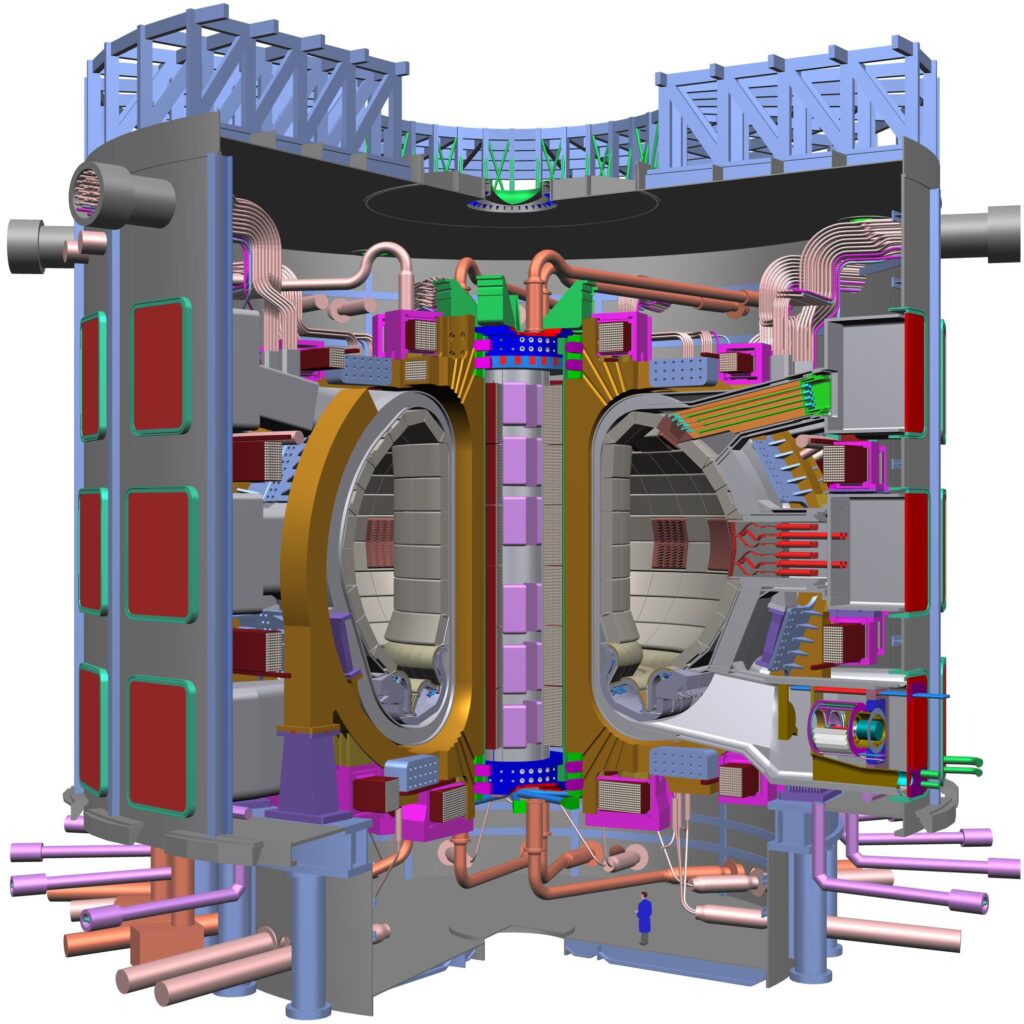
At the same time, not all scientists are convinced that it’s necessary to obtain such high values of temperature and density, as shown in recent experiments. Instead, they propose to focus on the magnetic fields, which they believe need to be fine-tuned for heating plasma in the torus chamber. For this plan to go anywhere, they will likely need a powerful AI to assist with the development.
Thermonuclear reactors in space
Although a functioning thermonuclear reactor is yet to be built on Earth, engineers are already brainstorming its possible application in space, mainly for the convenience of its fuel.
Hydrogen and helium, unlike uranium, are incredibly common in space. Even the Moon has Helium-3 deposits, an isotope that’s extremely rare on Earth. This element is the most promising piece of thermonuclear reactor development, which can generate great amounts of energy.
It’s quite clear that thermonuclear fusion reactors are the best option for potential use in space at the moment, considering that even their byproducts don’t require any special handling.
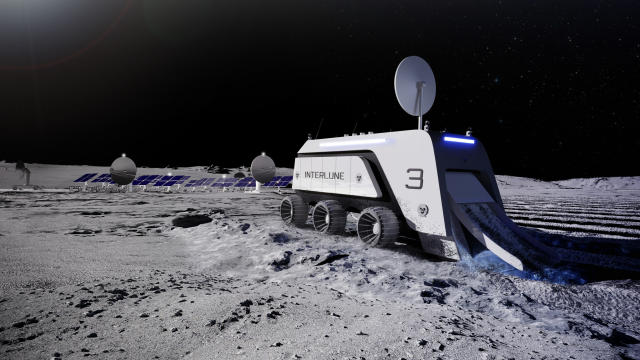
But even stable thermonuclear reactors pose a range of problems. The first is a matter of loading fuel into the reactor while it’s in operation. Should it be powered off or not? So far, scientists have no definitive answer.
Another issue to be resolved is the tendency of prototype reactors to generate neutrons in large amounts. These particles bombard the reactor from within and can even cause equipment failure.
All this points to the simple fact that any technological revolution in space energy is unlikely to happen any time soon. In the meantime, space missions will stick with the more efficient RTGs and solar panels. As for nuclear and thermonuclear reactors, their operation in orbit is a matter of decades.
This is not to say that all this research for efficient energy generation in space has been in vain. Over the years of trial and error, scientists have gained more insight into the more effective usage of existing technologies, a skill that will undoubtedly be useful in the future.
After all, no matter how powerful the future space reactors turn out to be, they will still need effective energy-saving strategies. For the time being, we can find plenty of uses for these innovations here on Earth.


